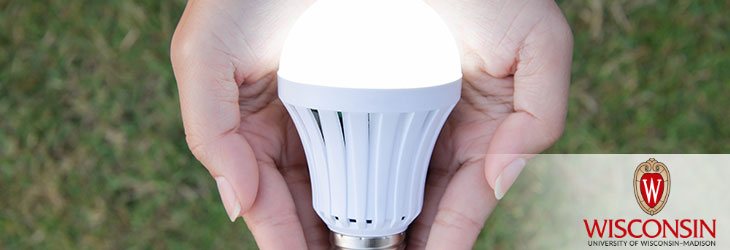Clean Technology

Photocatalytic Water Treatment Device
WARF: P06347US
Inventors: Marc Anderson, Gary Hatch, Michael Steinhardt, Michael Kurth
The Wisconsin Alumni Research Foundation (WARF) is seeking commercial partners interested in developing a water treatment cartridge that removes both inorganic and organic contaminants from water through the process of photocatalysis.
Overview
Drinking water must be treated to remove organic contaminants, such as pathogenic microorganisms, and inorganic contaminants, such as heavy metals.
The Invention
UW-Madison researchers have developed a water treatment cartridge that removes both inorganic and organic contaminants from water through the process of photocatalysis. Their device makes use of titanium dioxide, a ceramic material known to oxidize, and thus destroy, pathogenic microorganisms and complex organic molecules in the presence of ultraviolet light. UV-activated titanium dioxide also changes the valence state of inorganic molecules, such as heavy metals, facilitating their removal from water by other means. For example, titania ceramics oxidize arsenic (III), which is difficult to remove from water, to arsenic (V), which can be easily removed by adsorption.
The cylindrical water treatment device is composed of a stack of paired disks made of UV-transparent plastic. Each disk has a circular opening at its center like a washer, and carries a pattern of alternating concentric ribs and grooves on both faces. When the disks are fit together in pairs, the grooves and ribs form a series of concentric flow channels. Channel surfaces are coated with a thin layer of titanium dioxide, which is activated by a tubular UV light source inserted into the cartridge’s hollow center.
The cylindrical water treatment device is composed of a stack of paired disks made of UV-transparent plastic. Each disk has a circular opening at its center like a washer, and carries a pattern of alternating concentric ribs and grooves on both faces. When the disks are fit together in pairs, the grooves and ribs form a series of concentric flow channels. Channel surfaces are coated with a thin layer of titanium dioxide, which is activated by a tubular UV light source inserted into the cartridge’s hollow center.
Applications
- Water treatment
Key Benefits
- UV-activated photocatalysis oxidizes and destroys a wide range of organic, water-borne contaminants, including complex macromolecules, viruses, bacteria and protozoan cysts.
- May also be used to adsorb or change the valence state of inorganic materials, such as heavy metals, facilitating their removal from water
- Provides a large surface area, maximizing contact time between contaminated water and catalytic surfaces
- Cartridge is composed of moldable plastic, allowing it to be shaped into the most efficient waveguide forms.
Stage of Development
The researchers have shown that the transparent, plastic disks are effective waveguides for distributing UV light uniformly to all titanium dioxide-coated surfaces.
Tech Fields
For current licensing status, please contact Mark Staudt at [javascript protected email address] or 608-960-9845